- Livros
- Ball, P. (2006) Critical Mass: How One Thing Leads to Another. Farras, Straus and Giroux, New York.
- Barabasi, A. (2003) Linked: How Everything Is Connected to Everything Else and What It Means for Business, Science, and Everyday Life. Basic Books, New York.
- Buchanan, M. (2003) Nexus: Small Worlds and the Groundbreaking Science of Networks. W.W. Norton & Co., New York.
- Galloway, S. (2017) The Four: The Hidden DNA of Amazon, Apple, Facebook, and Google. Portfolio/Penguin, New York.
- Gawer, A. ed. (2009) Platforms, Markets and Innovation. Edward Elgar, Chentenham, UK.
- Gilder, G. (1989) Microcosm: The Quantum Revolution In Economics And Technology. Touchstone, New York
- Gilder, G. (2000) Telecosm: How Infinite Bandwidth Will Revolutionize Our World. The Free Press, New York.
- Isaacson, W. (2014) The Innovators: How a Group of Hackers, Geniuses, and Geeks Created the Digital Revolution. Simon & Schuster, New York.
- Ismail, S. et al. (2016) Exponential Organizations: Why New Organizations Are Ten Times Better, Faster, and Cheaper Than Yours (and what to do about it). Diversion Books, New York.
- Kelly, K. (1998) New Rules for the New Economy. Penguin Group, New York.
- Marshall, S. (2015) The Story of the Computer. A Technical and Business History
- Parker, G., Alstyne, M., Choudary, S. (2016) Platform Revolution: How Networked Markets Are Transforming the Economy and How to Make Them Work for You. W.W. Norton & Co., New York.
- Reillier, B., Reillier, L. (2017) Platform Strategy: How to Unlock the Power of Communities and Networks to Grow Your Business. Routledge, London and New York.
- Varian, H., Farrell, J., Shapiro, C. (2004) The Economics of Information Technology, an Introduction. Cambridge University Press, United Kingdom
- Watts, D. (2004) Six Degrees: The Science of a Connected Age. W.W. Norton & Co., New York.
- Artigos
- Andreessen, M. Why Software is Eating the World.
- Arthur, B. Increasing Returns and the New World of Business
- Barabasi, A. Bonabeau, E. (2003) Scale-Free Networks. Scientific American.
- Briscoe, B. et al. (2006) Metcalfe´s law is wrong. IEEE, Jul.
- Cisco, (2017) Cisco Visual Networking Index: Forecast and Methodology, 2016-2021
- Evans, D. (2009) How catalysts ignite: the economics of platform-based start-ups
- Galloway, S. Stratechery.
- Guadamuz, A. (2013) Networks, Complexity and Internet Regulation. The University of Edinburgh
- Haigu, A. Rothman, S. (2016) Network effects aren´t enough, HBR apr.
- Kirschner, M., Gerhart, J. (1998) Evolvability, Proceedings of National Academy of Science, 7 (3), 1200-221.
- Koch, T., Windsperger (2017) Seeing through the network: Competitive advantage in the digital economy. Journal of Organization Design 20176:6
- Kumar, S. (2015) Fundamental Limits to Moore´s Law.
- Langlois, R., (2002) The vanishing hand: the changing dynamics of industriual capitalism. University of Connecticut.
- McKinsey&Company (2015a) The Internet of Things: Mapping the Value Beyond the Hype
- McKinsey&Company (2015b) Digital America: A Tale of the Haves and Have-Mores
- Moore, G. (1998) Cramming More Components onto Integrated Circuits. IEEE vol 86, n.1
- Pontin, M. (2008) The state of the global telecosm
- Satell, G. (2017) The end of Moore´s law will change how we need to think about innovation
- Sato, T. (2004) Scale-Free Network Business Development Strategy.
- Shankland, S. (2012) Moore´s Law: The rule that really matters in tech
- Small, G. et al. (2009) Your brain on Google: Patterns of cerebral activation during internet searching, Am J Geriatr Psychiatry 17:2 Feb 2009.
- Sparrow, B. et al. (2011) Information at Our Fingertips. Google Effects on Memory: Cognitive Consequences of Having. Science 333, 776
- Tatum W., et. Al. (2016) Cortical processing during smartphone text messaging. Epilepsy Behavior Jun, 59; 117-21
- Yoo, Y. et. Al. (2010) The New Organizing Logic of Digital Innovation:
- An Agenda for Information Systems Research. ResearchGate
- Yoo, Y. (2015) Moore´s Law, Metcalfe´s Lawm and the Theory of Optimal Interoperability.





